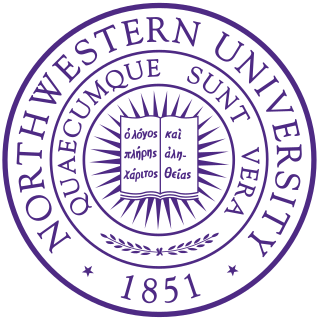
The Union Pacific Railroad is a freight hauling railroad that operates 8,500 locomotives over 32,100 route-miles in 23 states west of Chicago and New Orleans. The Union Pacific Railroad system is the second largest in the United States after the BNSF Railway and is one of the world's largest transportation companies. The Union Pacific Railroad is the principal operating company of the Union Pacific Corporation ; both are headquartered in Omaha, Nebraska.

The Northern Pacific Railway was a transcontinental railroad that operated across the northern tier of the western United States, from Minnesota to the Pacific Northwest. It was approved by Congress in 1864 and given nearly forty million acres of land grants, which it used to raise money in Europe for construction.

The Chicago, Burlington and Quincy Railroad was a railroad that operated in the Midwestern United States. Commonly referred to as the Burlington Route, the Burlington or as the Q, it operated extensive trackage in the states of Colorado, Illinois, Iowa, Kansas, Kentucky, Missouri, Montana, Nebraska, Wisconsin, Wyoming, and also in New Mexico and Texas through subsidiaries Colorado and Southern Railway, Fort Worth and Denver Railway, and Burlington-Rock Island Railroad. Its primary connections included Chicago, Minneapolis-St. Paul, St. Louis, Kansas City and Denver. Because of this extensive trackage in the midwest and mountain states, the railroad used the advertising slogans "Everywhere West", "Way of the Zephyrs", and "The Way West".

Wooden railroads, called wagonways, were built in the United States starting from the 1720s. A railroad was reportedly used in the construction of the French fortress at Louisburg, Nova Scotia, in New France in 1720. Between 1762 and 1764, at the close of the French and Indian War (1756–1763), a gravity railroad is built by British military engineers up the steep riverside terrain near the Niagara River waterfall's escarpment at the Niagara Portage in Lewiston, New York.

The Atchison, Topeka and Santa Fe Railway, often referred to as the Santa Fe or AT&SF, was one of the larger railroads in the United States. Chartered in February 1859, the railroad reached the Kansas-Colorado border in 1873 and Pueblo, Colorado, in 1876. To create a demand for its services, the railroad set up real estate offices and sold farm land from the land grants that it was awarded by Congress. Despite the name, its main line never served Santa Fe, New Mexico, as the terrain was too difficult; the town ultimately was reached by a branch line from Lamy.

The EMD E5 is a 2,000-horsepower (1,500 kW), A1A-A1A passenger train-hauling diesel locomotive manufactured by Electro-Motive Corporation, and its corporate successor, General Motors' Electro-Motive Division (EMD) of La Grange, Illinois, and produced exclusively for the Chicago, Burlington and Quincy Railroad, and its subsidiaries, during 1940 and 1941. The E5 was distinguished from the otherwise very similar E3, E4 and E6 by being clad in polished stainless steel to match the Burlington's Zephyr trains. Like those other models, the E5 had a sloping “slant nose” and it was equipped with two headlights — a regular stationary headlight above a gyrating "Mars" signal light. The E5 was the sixth in the EMD E-unit series.

The City of Denver was a streamlined passenger train operated by the Union Pacific Railroad between Chicago, Illinois, and Denver, Colorado. It operated between 1936 and 1971. From 1936–1955 the Chicago and North Western Railway handled the train east of Omaha, Nebraska; the Chicago, Milwaukee, St. Paul and Pacific Railroad handled it thereafter. The train was the fastest long-distance train in the United States when it debuted in 1936, covering 1,048 miles (1,687 km) in 16 hours. For almost its entire career its principal competitor was the Chicago, Burlington and Quincy Railroad's Denver Zephyr. When Amtrak assumed operation of most intercity trains in the United States in 1971, it discontinued the City of Denver, preferring to use the Burlington's route between Chicago and Denver.
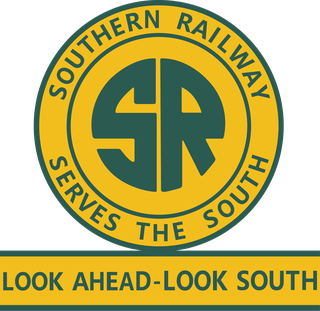
The Southern Railway is a name of a class 1 railroad that was based in the Southern United States. The railroad is the product of nearly 150 predecessor lines that were combined, reorganized and recombined beginning in the 1830s, formally becoming the Southern Railway in 1894.

The E8 was a 2,250-horsepower (1,678 kW), A1A-A1A passenger-train locomotive built by General Motors' Electro-Motive Division (EMD) of La Grange, Illinois. A total of 450 cab versions, or E8As, were built from August 1949 to January 1954, 447 for the U.S. and 3 for Canada. And 46 E8Bs were built from December 1949 to January 1954, all for the U.S. The 2,250 hp came from two 12 cylinder model 567B engines, each driving a generator to power the two traction motors on one truck. The E8 was the ninth model in the line of passenger diesels of similar design known as EMD E-units. Starting in September 1953, a total of 21 E8As were built which used either the 567BC or 567C engines.

EMD E-units were a line of passenger train diesel locomotives built by the General Motors Electro-Motive Division (EMD) and its predecessor the Electro-Motive Corporation (EMC). Final assembly for all E-units was in La Grange, Illinois. Production ran from May 1937, to December, 1963. The name E-units refers to the model numbers given to each successive type, which all began with E. The E originally stood for eighteen hundred horsepower, the power of the earliest model, but the letter was kept for later models of higher power.

Ralph Budd was an American railroad executive.

Edward Payson Ripley, sometimes referred to as Edward P. Ripley or E. P. Ripley, was the fourteenth president of the Atchison, Topeka and Santa Fe Railway.
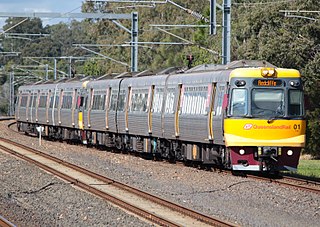
This page contains a list of terms, jargon, and slang used to varying degrees by railfans and railroad employees in the United States and Canada. Although not exhaustive, many of the entries in this list appear from time to time in specialist, rail-related publications. Inclusion of a term in this list does not necessarily imply its universal adoption by all railfans and railroad employees, and there may be significant regional variation in usage.
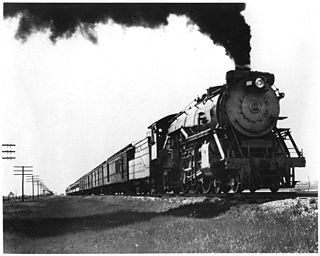
The Fort Worth and Denver Railway, nicknamed "the Denver Road," was a Class I American railroad company that operated in the northern part of Texas from 1881 to 1982, and had a profound influence on the early settlement and economic development of the region.

The Colorado and Southern Railway was an American Class I railroad in the western United States that operated independently from 1898 to 1908, then as part of the Chicago, Burlington and Quincy Railroad until it was absorbed into the Burlington Northern Railroad in 1981.
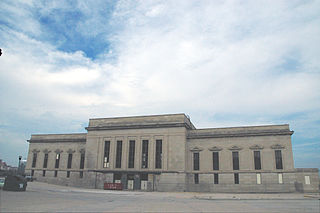
Railroads in Omaha, Nebraska have been integral to the growth and development of the city, the state of Nebraska, the Western United States and the entire United States. The convergence of many railroad forces upon the city was by happenstance and synergy, as none of the Omaha leaders had a comprehensive strategy for bringing railroads to the city.

Charles Elliott Perkins was an American businessman and president of the Chicago, Burlington and Quincy Railroad. He was so well respected that historian Richard Overton wrote, "From the time that Charles Elliott Perkins became vice president of the Chicago, Burlington and Quincy [1876] ... until he resigned as president in 1901, he was the Burlington."

The Dash 9 Series is a line of road switcher diesel locomotives built by GE Transportation Systems. It replaced the Dash 8 Series in the mid-1990s, and was superseded by the Evolution Series in the mid-2000s. Dash 9 series locomotives are some of the most common in the United States.
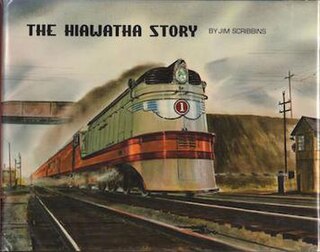
The Hiawatha Story is a 1970 non-fiction book on railroad history by Jim Scribbins, then an employee of the Chicago, Milwaukee, St. Paul and Pacific Railroad. The book covers the history of the Milwaukee Road's most famous passenger train, the Hiawatha, from its creation in 1934–1935 up through 1970. The book also covered the various other Milwaukee Road trains which carried the name "Hiawatha."




